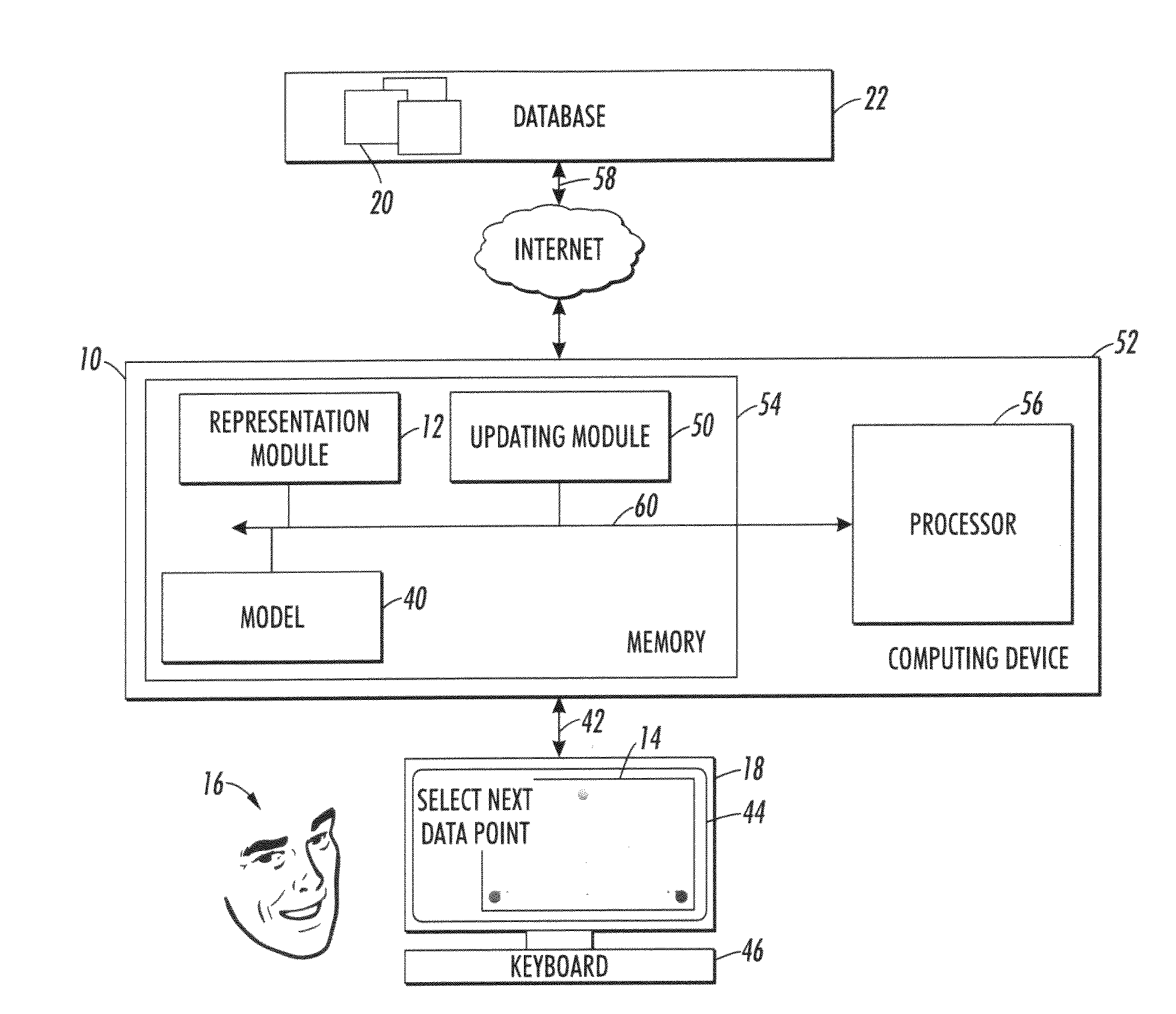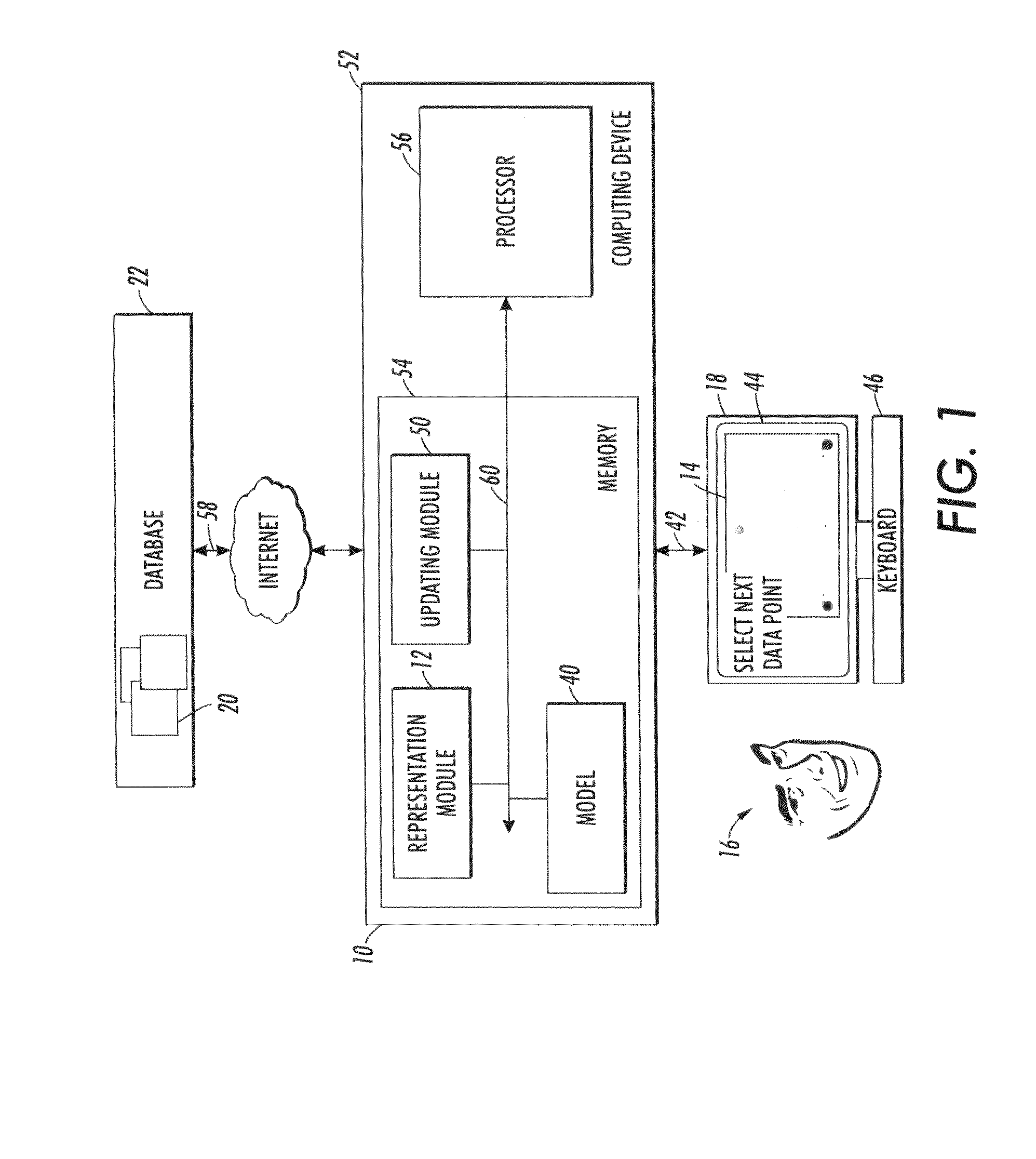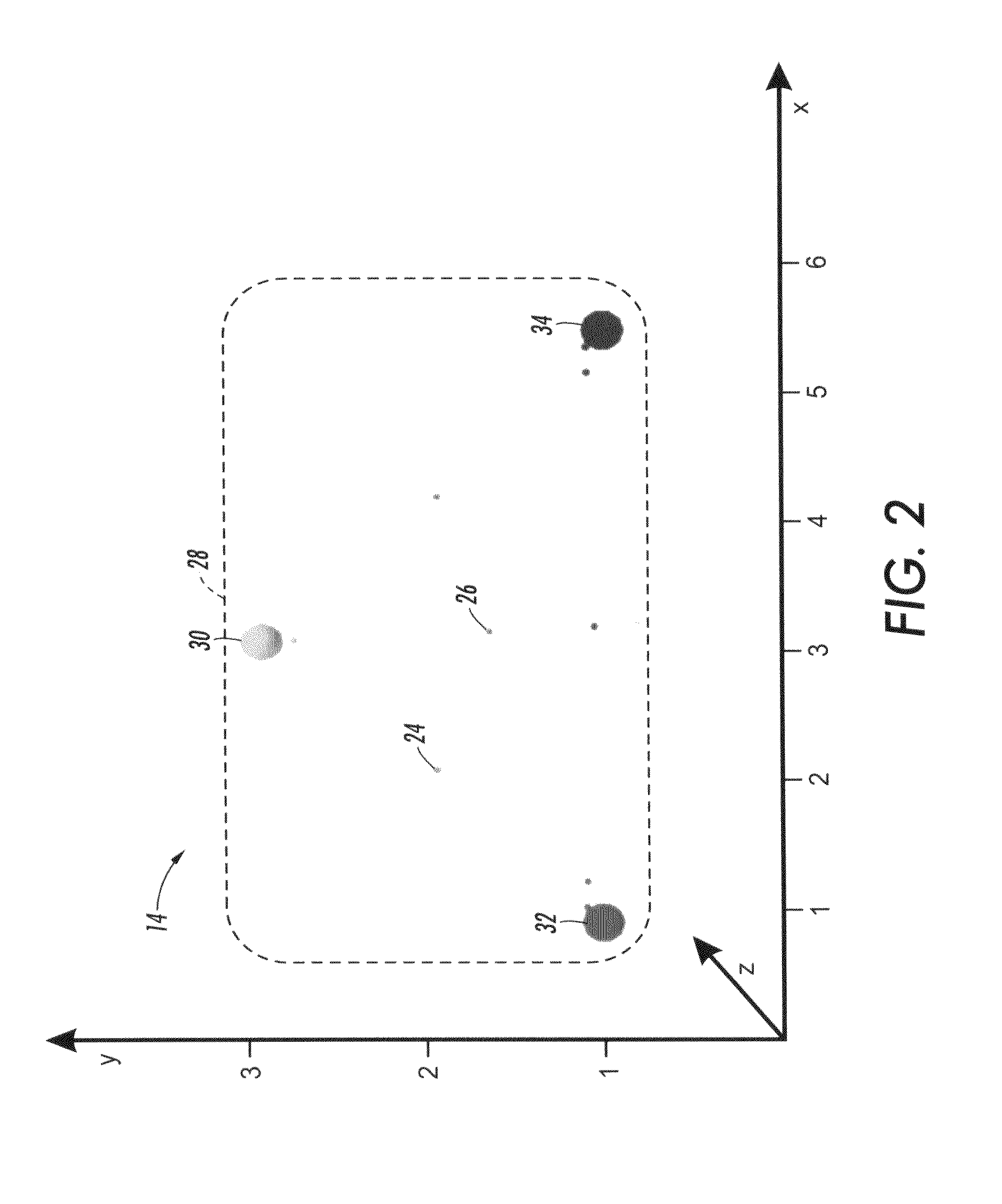Model uncertainty visualization for active learning
a model uncertainty and active learning technology, applied in the field of active learning, can solve the problems of insufficient information to provide annotators with enough information, user has no relevant information about the quality of the current model, and annotators have no knowledge of where the uncertainty in the model lies and how
- Summary
- Abstract
- Description
- Claims
- Application Information
AI Technical Summary
Problems solved by technology
Method used
Image
Examples
examples
[0081]To evaluate the exemplary visual active learning system 10, tests were run comparing the system with other active learning approaches. Two specific cases have been evaluated. In the first case, the influence of the annotator's prior domain knowledge about the dataset is evaluated. In the second case, the impact of performing several annotations between two learning / inference steps is evaluated.
[0082]In each example, the active learning process begins with one labeled item per class. Next, an iterative process starts: an unannotated element of the training set is labeled and added to the current classifier. The model accuracy is then evaluated on a test set. In all tests, a cross-validation is used. For these tests, K-fold cross-validation was used. In K-fold cross-validation, the original sample is partitioned into K subsamples, where K may be 2, 3, etc. Of the K subsamples, a single subsample is retained as the validation data for testing the model, and the remaining K−1 subs...
example a
Comparison of Active Learning Methods where Ambiguities are Unknown
[0088]This evaluation used three datasets from the UCI collection (See, Newman). In this dataset, the user has no prior knowledge about the dataset. FIG. 7 shows the average for three datasets (Lymph, Iris and Glass). A three-fold cross validation was used (K=3).
[0089]In FIG. 7, accuracy is plotted against the number of annotations previously added to the model. Accuracy is a measure of the model's ability to correctly assign a label to an unlabeled element. Classical proportional accuracy is used for determining the accuracy (accuracy=sum (correct / total)). In all cases, accuracy increases as the number of annotations increases, i.e., the model learns from the user's annotations. On this dataset, the exemplary Visual Active Learning method (Manual average) appears to be at least comparable to the three Uncertainty Based Sampling (UBS) approaches tested and superior to the Random approach. This indicates that even wit...
example b
Comparison of Active Learning Methods where Annotator has some Knowledge of Ambiguities
[0090]In this example, a collection of scientific articles (CPO) was used as the data set. In the CPO collection, 6 classes are defined (Unknown, Reference, Author, Location, Title, and Organization). A two-fold cross validation (K=2) is used. Here the class distribution is unbalanced with a large number of elements (here, document parts) annotated as Unknown. In this example, all classes are initially equally weighted for purposes of determining accuracy (See Boris Chidlovskii, Jérôme Fuselier. HTML-to-XML Migration by means of sequential learning and grammatical inference. IJCAI 05 Workshop on Grammatical Inference Applications, Edinburgh, Scotland, 30 Jul. 2005). The user has some domain knowledge about this collection, such as a general understanding of the class distribution and the class ambiguities (e.g., that Location and Organization are generally more similar than Title and Reference).
[0...
PUM
 Login to View More
Login to View More Abstract
Description
Claims
Application Information
 Login to View More
Login to View More - R&D
- Intellectual Property
- Life Sciences
- Materials
- Tech Scout
- Unparalleled Data Quality
- Higher Quality Content
- 60% Fewer Hallucinations
Browse by: Latest US Patents, China's latest patents, Technical Efficacy Thesaurus, Application Domain, Technology Topic, Popular Technical Reports.
© 2025 PatSnap. All rights reserved.Legal|Privacy policy|Modern Slavery Act Transparency Statement|Sitemap|About US| Contact US: help@patsnap.com



